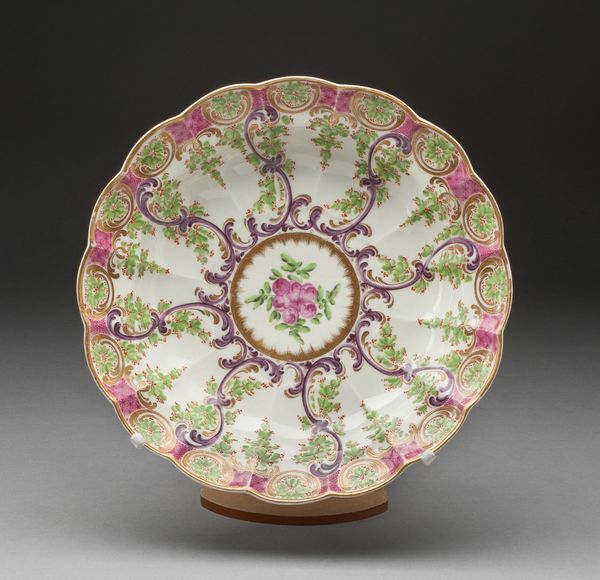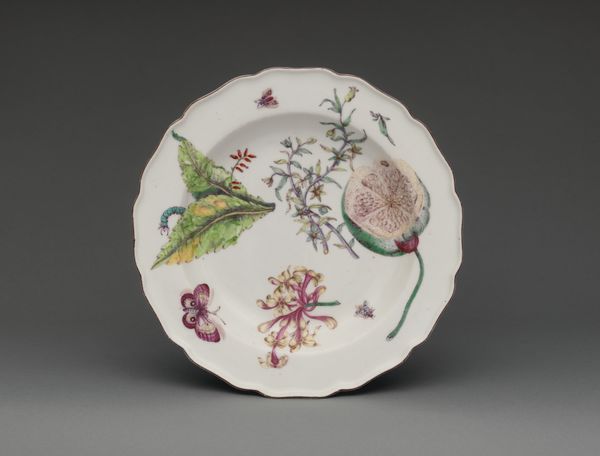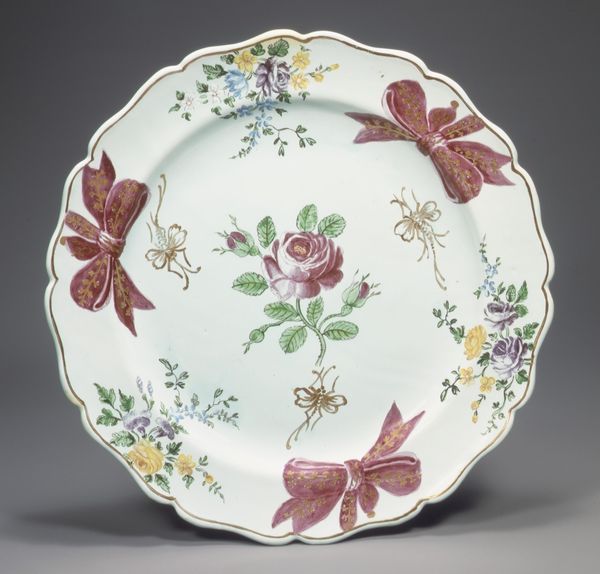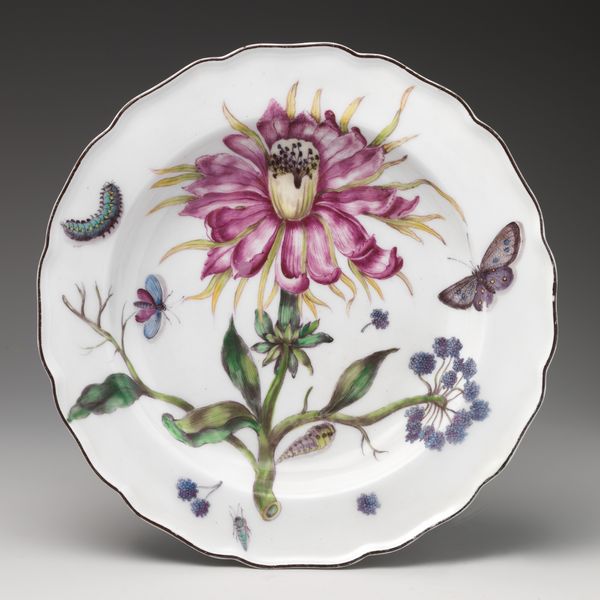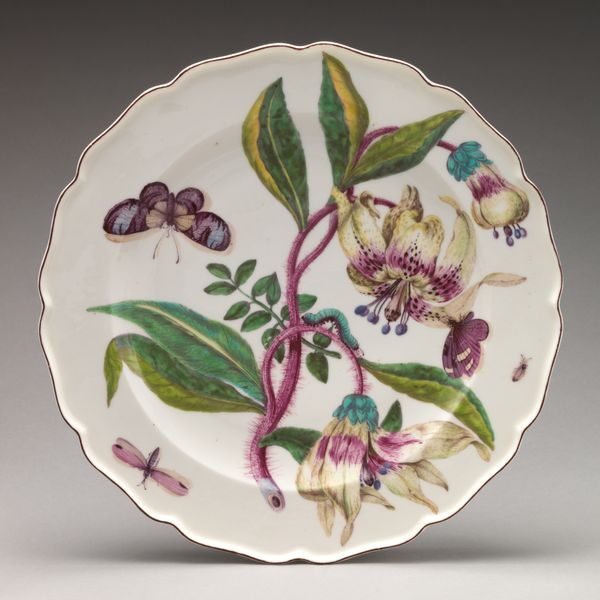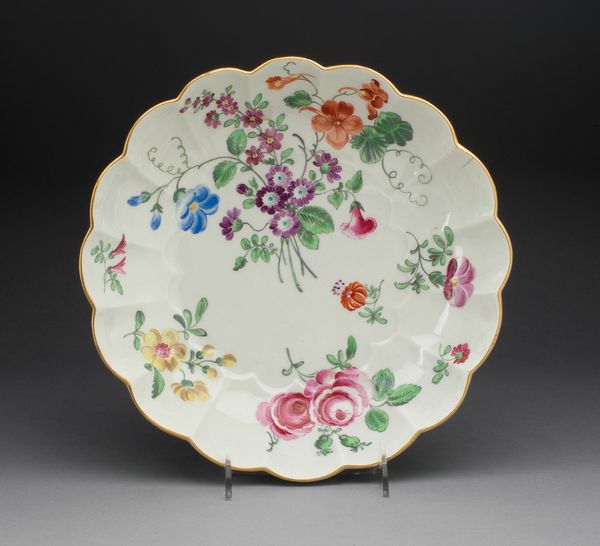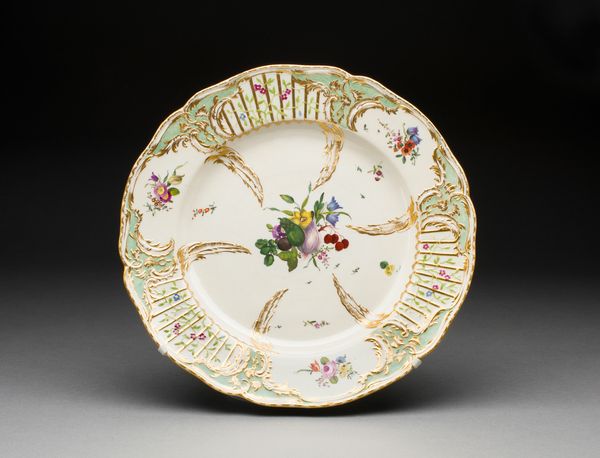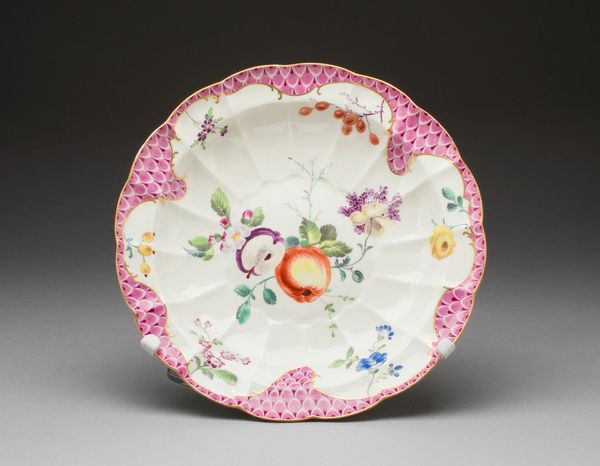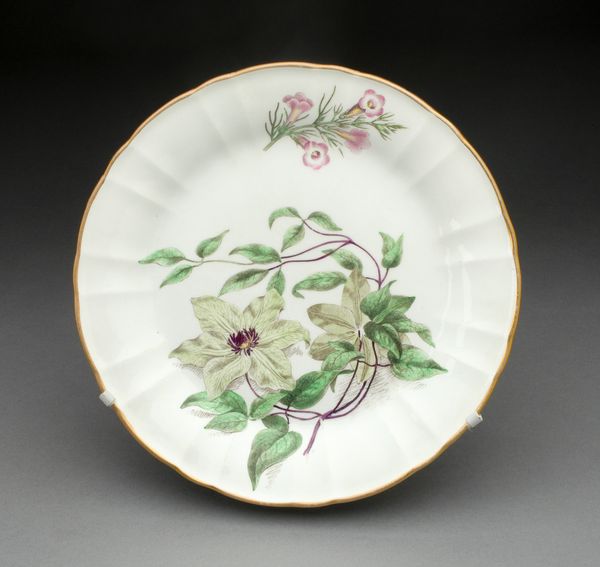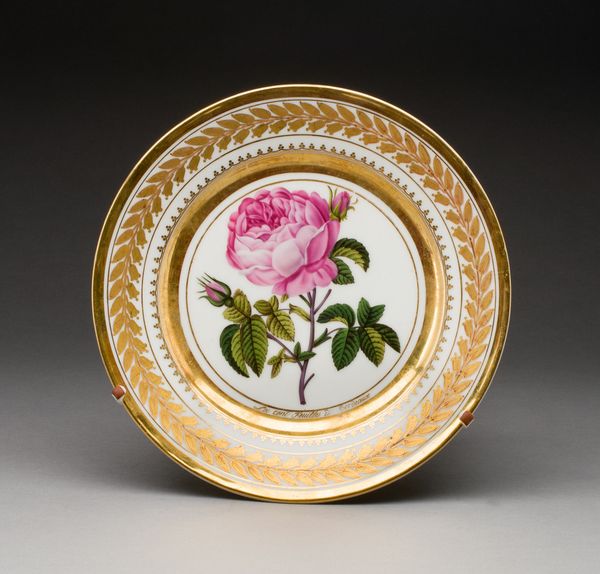
painting, ceramic
#
painting
#
impressionism
#
ceramic
#
flower
#
stoneware
#
ceramic
#
united-states
#
decorative-art
Dimensions: 9 1/2 in. (24.1 cm)
Copyright: Public Domain
Editor: Here we have "Plate" made by Hannah Davis Monachesi in 1887. It's a ceramic plate, adorned with a beautiful painting of flowers. I'm immediately struck by its delicate and almost feminine aesthetic. How do you interpret this work? Curator: It’s fascinating to consider this plate, created during a period when women artists were often relegated to the decorative arts. While seemingly conventional, this floral design can be viewed through a feminist lens. Do you think Monachesi’s choice of subject matter was simply ornamental, or could it be seen as a subtle act of claiming space within a patriarchal art world? Editor: That’s a great question! I hadn't thought of it as a claim to space. Maybe the very act of elevating a domestic object with fine art was her way of pushing boundaries? Curator: Precisely! Think about the Victorian era's "language of flowers," where each bloom carried symbolic weight. Could these chrysanthemums, symbols of longevity and devotion, also represent something deeper about the artist's personal narrative or her critique of societal expectations placed upon women? The deliberate artistry challenges the separation between "high art" and "craft," demanding a reevaluation of artistic hierarchies. What message do you think Monachesi might have been sending to her audience? Editor: So it's more than just pretty flowers on a plate! Considering the period and her position as a woman artist, it suggests layers of meaning, challenging established artistic norms, and sparking dialogue on gender and artistic value. Curator: Exactly. It serves as a reminder that even within seemingly traditional forms, artists can embed powerful social and political statements. Editor: I'll definitely look at decorative arts differently now! Thanks for expanding my perspective on the art. Curator: My pleasure, that’s the best part about art—questioning our assumptions and recognizing the multiple voices within it.
Comments
No comments
Be the first to comment and join the conversation on the ultimate creative platform.

